

On the main building site work had begun to cut out the terrace on which the house was to stand. We worked in temperatures below freezing and had to pick away the top 5 cm. as it was frozen solid.
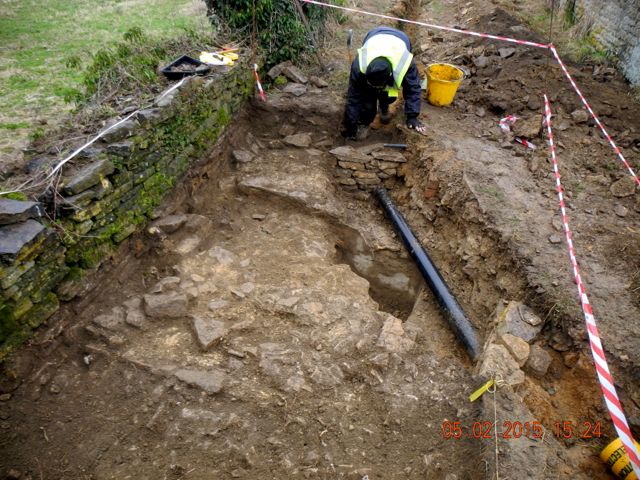
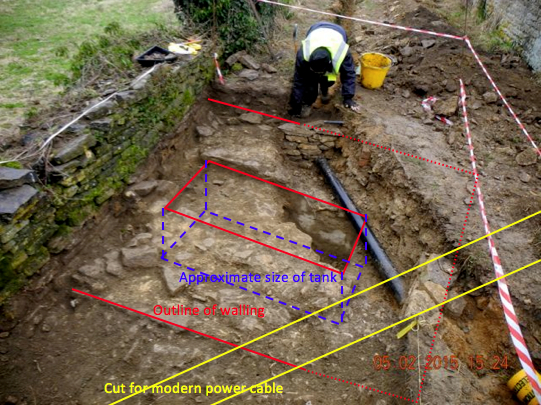
Starting to clean up nicely: the actuality and an interpretation.
Another week
went by before we were able to return to Enstone and work was
concentrated on removing the fill from the late 20th. century power
cable trench, that was me, while Robin started on excavating the rubble
fill to the cistern and Peter worked on defining the northern edge of
the wall to the north. Robin's efforts uncovered some curious
structural elements including a squared socket like feature against the
retaining wall to the west and an odd offset paralleling a similar
narrowing of the feature on the other side. The material packed into
the cistern became much more rubbly and mortary and dense to the point
where we were struggling to establish the southern limit of the
walling. Peter found the question of the edge of the north wall equally
challenging but in the course of carefully lifting assorted spreads of
rubble came across a curious little cache consisting of a well made but
hefty bone awl, some animal bone and pottery, probably of the 17th.
century and a very nice clay pipe bowl which again be ascribed to the
opening decades of the 17th. century. What it was all doing there
precariously balanced on a piece of tile above a series of voids is
difficult to say but it resembles the material (plus clay pipe bowl)
that we identified the rubble back fill behind the terrace wall up by
the barn (See December's entry ). Unfortunately there was then another long wait (more essay time needed) before we could return to the spot.
+
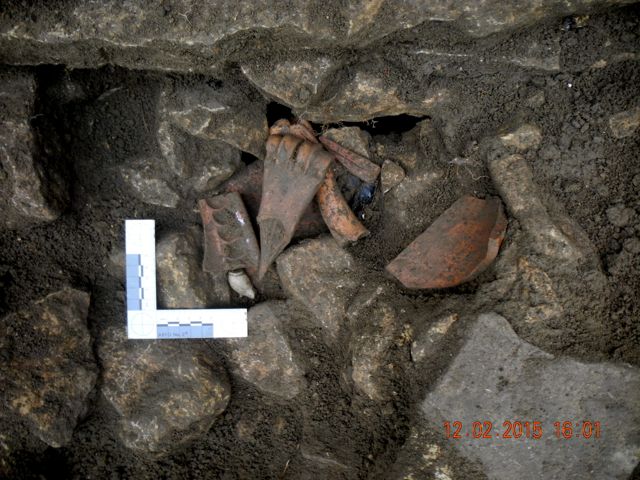
Peter and Robin set about their appointed tasks. Peter's curious collection.

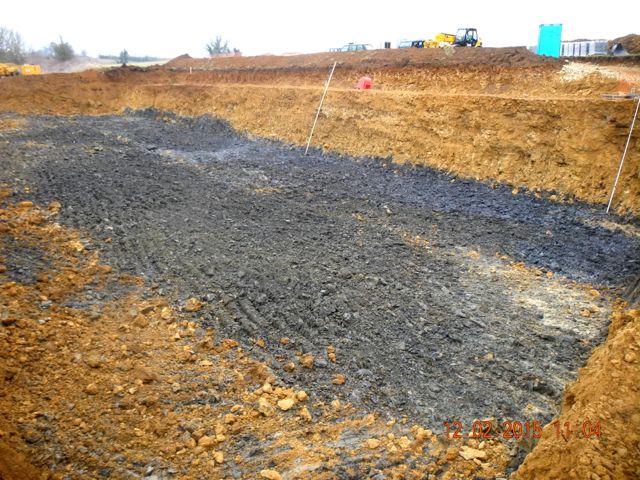
The scene by the end of the day, lots of work done but still lots to clarify. Meanwhile the hole for the house gets deeper as they scrape through a band of blue clay.


Peter and Robin set about their appointed tasks. Peter's curious collection.


The scene by the end of the day, lots of work done but still lots to clarify. Meanwhile the hole for the house gets deeper as they scrape through a band of blue clay.
Of course one of
highlights of February had to be the 'Stars and Snowdrops' day at
Hanwell, organised by the community observatory, we had several hundred
visitors, many coming as a family, to walk round the gardens, peer into
archaeological excavations, admire the snowdrops and learn more about
astronomy before ending up with tea and cake by a log fire.

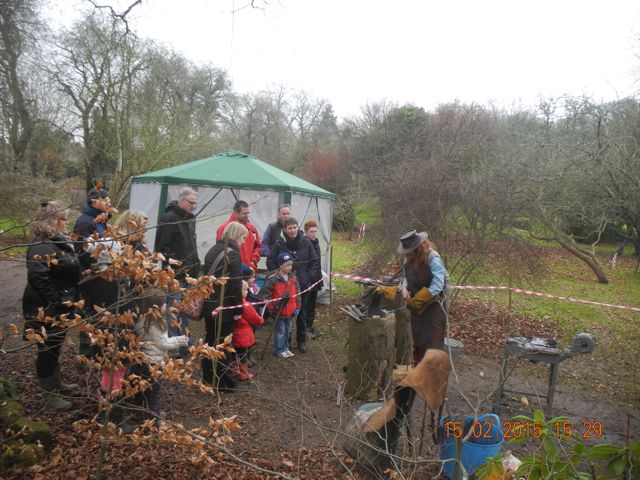
The display marquee with plant stand and spoon carver. A smithing display gets underway.
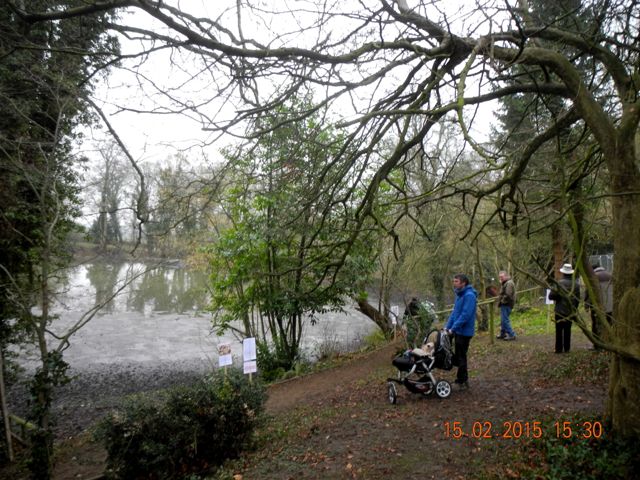
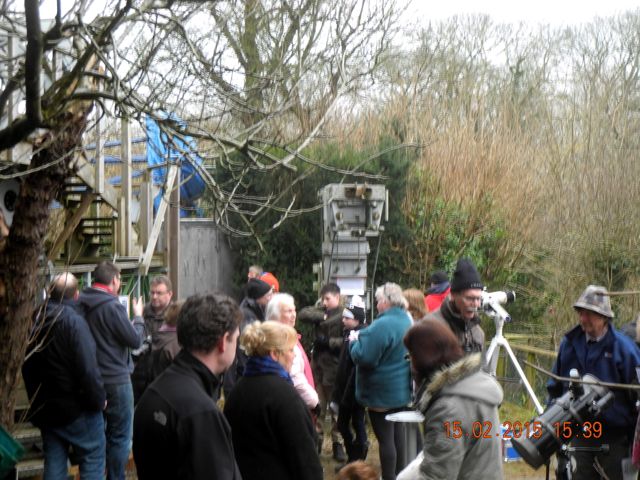
About to hit the trail, visitors pause at the first information panel. The crowds cluster round the telescopes and astronomers.
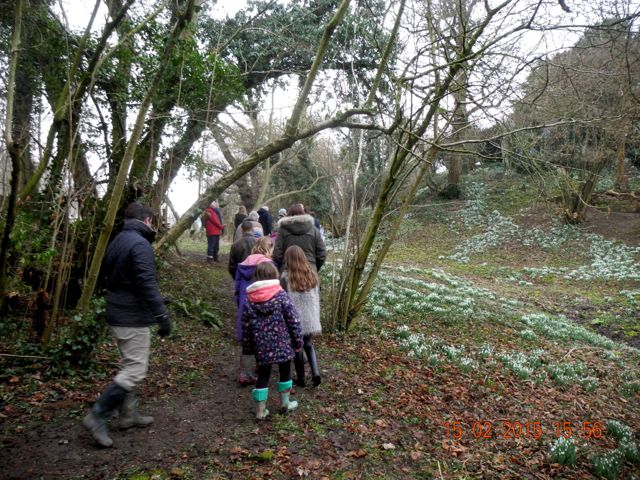

Following the visitors around, coming towards the Great East Terrace and, of course, snowdrops. The quest is over, heading off for tea and cake.


The display marquee with plant stand and spoon carver. A smithing display gets underway.


About to hit the trail, visitors pause at the first information panel. The crowds cluster round the telescopes and astronomers.


Following the visitors around, coming towards the Great East Terrace and, of course, snowdrops. The quest is over, heading off for tea and cake.
Taking a break from the seventeenth
century the weekend of the 21st. / 22nd. saw us supporting the Chacombe
Archaeology Weekend. A small group of local enthusiasts have been
encouraging their community to take a more informed interest in Berry
Close, a suggestively named field next to the church. In all we spent five days on site and came up with some exciting results. You can read all about it HERE.
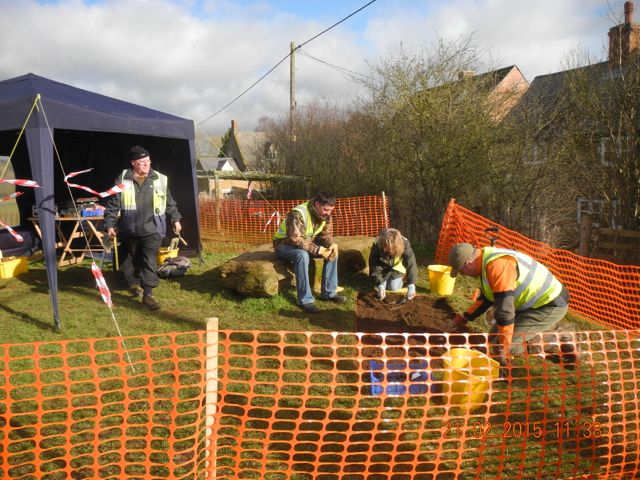
Work begins at Chacombe.
Amidst all the excitement at Chacombe a very wet morning at Enstone proved equally interesting. it was raining from the outset but a couple of hours were done before everything got just too slippy and sloppy. However, during the course of this a couple of things became clear. First up the fill of our cistern was actually sorted in such a way so that we had fallen stone roof tiles to the north with rubble and mortar and then slabs of fallen whitewashed plaster to the south. Could this be the remains of a structure above the tank rather than demolition material from the great house? The structure continues to be a puzzling one, a situation made worse by the discovery that the south side of the tank instead of having a vertical face actually sloped up to the south at an angle of around 45 degrees. This is very curious, could be be looking at the remains of some kind of ornamental structure or is it something like an elaborate silt trap?
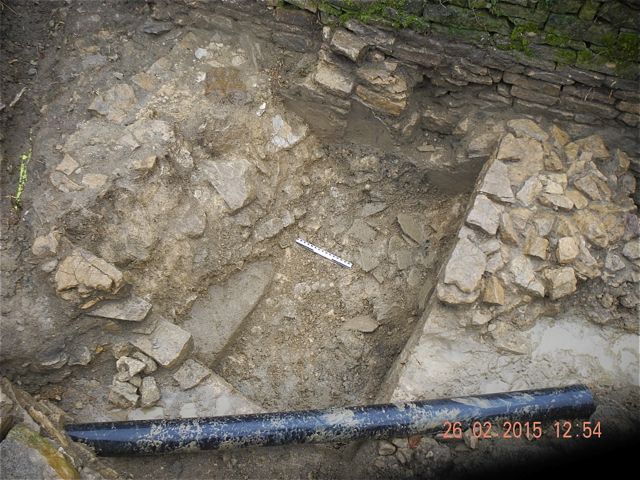
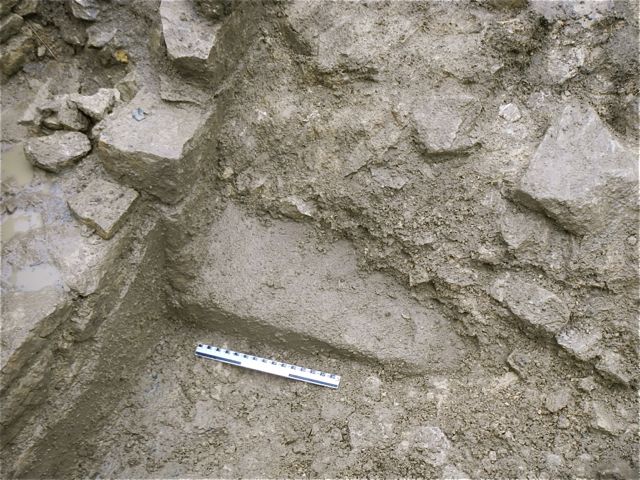
The cistern looking west, to the right piles of roof tiles to the left plaster and the beginnings of the sloping ramp. Close up of the damp ramp and adjacent stonework and rendering, looking south.

What a way to spend your birthday!

Work begins at Chacombe.
Amidst all the excitement at Chacombe a very wet morning at Enstone proved equally interesting. it was raining from the outset but a couple of hours were done before everything got just too slippy and sloppy. However, during the course of this a couple of things became clear. First up the fill of our cistern was actually sorted in such a way so that we had fallen stone roof tiles to the north with rubble and mortar and then slabs of fallen whitewashed plaster to the south. Could this be the remains of a structure above the tank rather than demolition material from the great house? The structure continues to be a puzzling one, a situation made worse by the discovery that the south side of the tank instead of having a vertical face actually sloped up to the south at an angle of around 45 degrees. This is very curious, could be be looking at the remains of some kind of ornamental structure or is it something like an elaborate silt trap?


The cistern looking west, to the right piles of roof tiles to the left plaster and the beginnings of the sloping ramp. Close up of the damp ramp and adjacent stonework and rendering, looking south.

What a way to spend your birthday!